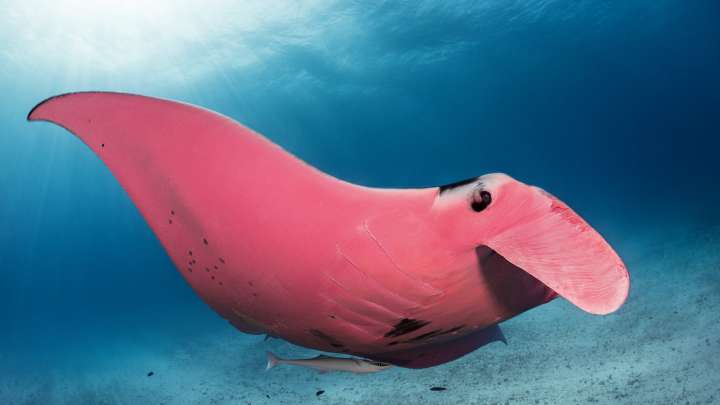Beautiful New Images Of World’s Only Known Pink Manta Ray Snapped In The Great Barrier Reef
Around Lady Elliot Island, a 45-hectare island in Australia’s Great Barrier Reef Marine Park, swims a sight like no other in the world: a manta ray with a bright pink belly. The animal was first seen in 2015 and received the name Inspector Clouseau, after the bumbling detective in the Pink Panther movies.
New images of Inspector Clouseau, the only known manta ray with this particular coloration, were recently taken by underwater wildlife photographer Kristian Laine.
The rosy-hued ray came to the attention of the University of Queensland’s Project Manta, who wondered about the reason behind the curious color. The researchers performed a small tissue biopsy in 2016, nixing infection or sickness as the cause. In a Facebook post, the team stated that the pink hue is likely due to “an unusual and unique expression of the skins [sic] melanin!”
It’s possible the ray has a genetic mutation called erythrism related to the overproduction of red pigments and the underproduction of dark pigments, caused by a recessive gene – much like that for albinism, melanism, and leucism. Erythrism has been seen in a variety of animals, from leopards to snakes, and though it is incredibly rare, it is most often observed in grasshoppers.
It may be a rarely observed phenomenon because animals with this unusual coloring are easy prey and don’t make it to adulthood, but this male ray seems to be doing just fine. Possibly because manta rays are born big, and get bigger very quickly. Adult manta rays weight more than a ton.
Manta rays are distributed around the world in tropical and subtropical waters, but not all species are equally distributed. Project Manta aims to better understand manta ray populations in Australia and the surrounding regions. Studying the movements of these animals requires tracking and recognizing them. Luckily, every single manta ray has a unique spotting pattern on their underside, a sort of belly fingerprint, and scientists use these to identify individuals.
Project Manta asks citizen scientists to submit photos of rays from around Australia, so if you have any, consider sending them to these researchers to help us understand these beautiful creatures of the deep even better.
[H/T: Australian Geographic]



